Related Research Articles

The Kingdom of Israel, also called the Northern Kingdom or the Kingdom of Samaria, was an Israelite kingdom that existed in the Southern Levant during the Iron Age. Its beginnings date back to the first half of the 10th century BCE. It controlled the areas of Samaria, Galilee and parts of Transjordan; the former two regions underwent a period in which a large number of new settlements were established shortly after the kingdom came into existence. It had four capital cities in succession: Shiloh, Shechem, Tirzah, and the city of Samaria. In the 9th century BCE, it was ruled by the Omride dynasty, whose political centre was the city of Samaria.

Moriah is the name given to a mountain in the Book of Genesis, where the binding of Isaac by Abraham is said to have taken place. Jews identify the region mentioned in Genesis and the specific mountain in which the near-sacrifice is said to have occurred with "Mount Moriah", mentioned in the Book of Chronicles as the place where Solomon's Temple is said to have been built, and both these locations are also identified with the current Temple Mount in Jerusalem. The Samaritan Torah, on the other hand, transliterates the place mentioned for the binding of Isaac as Moreh, a name for the region near modern-day Nablus. It is believed by the Samaritans that the near-sacrifice actually took place on Mount Gerizim, near Nablus in the West Bank.
Ephrath or Ephrathah or Ephratah is a biblically referenced former name of Bethlehem, meaning "fruitful". It is also a personal name.

Caleb is a figure who appears in the Hebrew Bible as a representative of the Tribe of Judah during the Israelites' journey to the Promised Land.
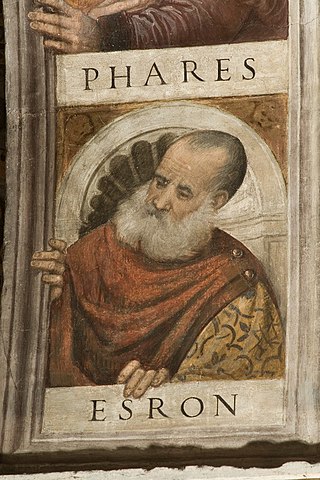
Hezron is a name which occurs several times in the Hebrew Bible.
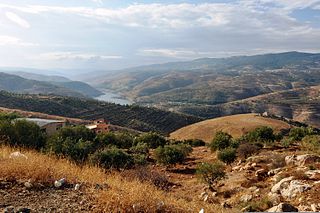
Gilead or Gilad is the ancient, historic, biblical name of the mountainous northern part of the region of Transjordan. The region is bounded in the west by the Jordan River, in the north by the deep ravine of the river Yarmouk and the region of Bashan, and in the southwest by what were known during antiquity as the "plains of Moab", with no definite boundary to the east. In some cases, "Gilead" is used in the Bible to refer to all the region east of the Jordan River. Gilead is situated in modern-day Jordan, corresponding roughly to the Irbid, Ajloun, Jerash and Balqa Governorates.
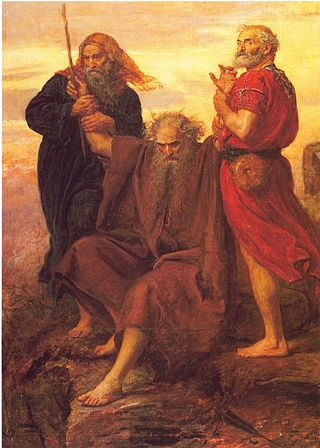
Hur was a companion of Moses and Aaron in the Hebrew Bible. He was a member of the Tribe of Judah. His identity remains unclear in the Torah itself, but it is elaborated in rabbinical commentary.
Maacah is a non-gender-specific personal name used in the Bible to refer to a number of people.
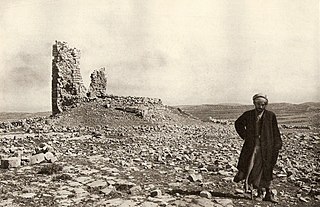
Beth-Zur is a biblical site of historic and archaeological importance in the mountains of Hebron in southern Judea, now part of the West Bank. Beth Zur is mentioned several times in the Hebrew Bible and the writings of the Roman Jewish historian Josephus. The Battle of Beth-Zur took place here in 164 BCE.
Kenizzite was an Edomite tribe referred to in the covenant God made with Abraham. They are not mentioned among the other inhabitants of Canaan in Exodus 3:8 and Joshua 3:10 and probably inhabited some part of Arabia, in the confines of Syria.
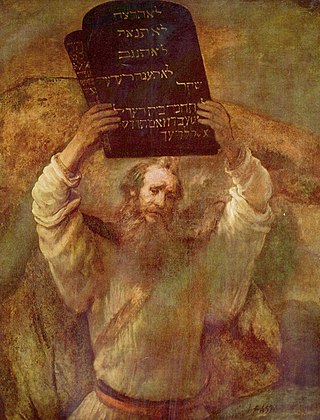
Mount Horeb is the mountain at which the Ten Commandments were given to Moses by God, according to the Book of Deuteronomy in the Hebrew Bible. It is described in two places as הַר הָאֱלֹהִים the "Mountain of Elohim". The mountain is also called the Mountain of YHWH.
Ephah was one of Midian's five sons as listed in the Hebrew Bible. Midian, a son of Abraham, was the father of Ephah, Epher, Enoch, Abida, and Eldaah by his wife Keturah. These five were the progenitors of the Midianites.

1 Chronicles 3 is the third chapter of the Books of Chronicles in the Hebrew Bible or the First Book of Chronicles in the Old Testament of the Christian Bible. The book is compiled from older sources by an unknown person or group, designated by modern scholars as "the Chronicler", and had the final shape established in late fifth or 4th century BCE. This chapter contains the genealogy of unbroken Davidic line from the time of David to the post-exilic period, providing a possibility of the reinstatement of the Davidic monarchy in Jerusalem with its rightful heir, should circumstances allow. It is divided into three parts: (1) the sons of David ; (2) the kings in Jerusalem ; (3) the descendants during and after the exile period, verses 17–24. Together with chapters 2 and 4, it focuses on the descendants of Judah: chapter 2 deals with the tribes of Judah in general, chapter 3 lists the sons of David in particular and chapter 4 concerns the remaining families in the tribe of Judah and the tribe of Simeon. These chapters belong to the section focusing on the list of genealogies from Adam to the lists of the people returning from exile in Babylon.

1 Chronicles 2 is the second chapter of the Books of Chronicles in the Hebrew Bible or the First Book of Chronicles in the Old Testament of the Christian Bible. The book is compiled from older sources by an unknown person or group, designated by modern scholars as "the Chronicler", and had the final shape established in late fifth or fourth century BCE. This chapter and two subsequent ones focus on the descendants of Judah, where chapter 2 deals with the tribe of Judah in general, chapter 3 lists the sons of David in particular and chapter 4 concerns the remaining families in the tribe of Judah and the tribe of Simeon. These chapters belong to the section focusing on the list of genealogies from Adam to the lists of the people returning from exile in Babylon.

1 Chronicles 4 is the fourth chapter of the Books of Chronicles in the Hebrew Bible or the First Book of Chronicles in the Old Testament of the Christian Bible. The book is compiled from older sources by an unknown person or group, designated by modern scholars as "the Chronicler", and had the final shape established in late fifth or fourth century BCE. Together with chapters 2 and 3, this chapter focuses on the descendants of Judah: chapter 2 deals with the tribes of Judah in general, chapter 3 lists the sons of David in particular and chapter 4 concerns the remaining families in the tribe of Judah and the tribe of Simeon, geographically the southernmost west-Jordanian tribe. These chapters belong to the section focusing on the list of genealogies from Adam to the lists of the people returning from exile in Babylon.
References
- ↑ Robert North, S.J. The Chronicler..., The New Jerome Biblical Commentary, Prentice Hll, Englewood Cliffs, New Jersey, 1990, page 365